Everything You Need to Know About Daughter Boards
2024-06-20
4477
Catalog

Figure 1: Daughter Board
Definition of Daughter Board
Other names for a daughter board are riser cards, piggyback boards, and daughter cards. It is a tiny circuit board that joins the computer motherboard directly. Unlike standard expansion cards connecting via buses and serial interfaces, daughter boards are attached directly to the motherboard, which guarantees a safer connection and consistent operation.

Figure 2: Daughter Board on Motherboard
Daughter boards extend the capabilities of the motherboard they connect to. They make possible extra features that are not present on the motherboard itself. For example, a daughter board can add more memory, specialized audio processing units, or unique ports for specific tasks. This versatility makes the daughter board a cost-effective solution for upgrading & customizing computer systems.
Instead of replacing an entire motherboard, which can be costly plus time-consuming, you can simply add or replace a daughter board to achieve the desired enhancements. This modular approach saves money. This also allows you for more flexible and targeted upgrades, enabling computer systems to meet technological advancements.
Daughter Board Structure and Components
From the core PCB to the various connectors, integrated circuits, passive components, and power management systems, each element plays a role in ensuring the seamless operation of a daughter board.
PCB (Printed Circuit Board)
The printed circuit board (PCB) is a flat board with conductive pathways etched onto its surface. These copper pathways form a network of electrical connections linking the electronic components mounted on the board. The PCB's design & layout are important for the daughter board's functionality, as it optimizes signal integrity and minimizes electrical interference.
PCB is at the heart of every daughter board. This serves as the structural and electrical backbone. This is made of several top-quality materials: fiberglass, copper foil, prepeg, solder mask, silkscreen ink, and electronic copper.

Figure 3: Materials for PCB Production
• Fiberglass (FR4) is the main material used in Printed Circuit Boards (PCBs), including those in daughter boards. This is known for its strength, durability, and excellent insulation. Made from woven fiberglass cloth and an epoxy resin binder.
• Copper foil is applied to the board to form electrical pathways connecting various components.
• Prepreg is a fiberglass cloth coated with resin. It bonds layers together and provides insulation between them.
• Solder Mask is the green-colored layer covering the copper traces. It prevents oxidation and short circuits during soldering.
• Silkscreen ink prints labels, symbols, and component identifiers on the board.
• Electrolytic copper plates through holes and vias, guarantee electrical connections between different board layers.
Connectors and Interfaces
Connectors and interfaces enable daughter boards to connect to the motherboard and other circuit boards. These connectors come in different types: PCIe (Peripheral Component Interconnect Express) slots, M.2 connectors, and DIMM (Dual Inline Memory Module) slots. The best connector type for you depends on the daughter board requirements and the available interfaces on the motherboard.
PCIe Slots

Figure 4: PCIe Slots In Different Lengths
PCIe slots are used due to their high-speed data transfer capabilities. They support applications like graphics cards, network interface cards, and SSDs (Solid State Drives).
M.2 Connectors

Figure 5: M.2 Connectors for Daughter Boards
M.2 connectors are known for their compact size and high data transfer rates. They are ideal for storage solutions like NVMe SSDs. Besides that, M.2 connectors also support Wi-Fi and Bluetooth modules. Their slim profile and direct attachment to the motherboard make them ideal for laptops or compact desktops with limited space.
DIMM Slots

Figure 6: DIMM Slots for Daughter Boards
DIMM slots are designed for memory modules. They make it simple to install RAM and increase a computer's memory capacity and speed. DIMM slots come in very handy for memory-intensive operations like data processing, gaming, and video editing. RAM expansion via DIMM slots improves a system's multitasking and general responsiveness. Memory modules are guaranteed to be firmly installed in DIMM slots, which lowers the possibility of connectivity problems and guarantees stable operation.
Integrated Circuits (ICs)
Integrated circuits (ICs) perform tasks like data processing, power management, and overall operation. These tiny electronic chips come in diverse types, including microcontrollers, memory chips, specialized ICs, and network communication ICs.
Passive Components
Passive components don't generate power or amplify signals; instead, they regulate electrical signals and power distribution. Designing a daughter board relies heavily on these components, including resistors, capacitors, and inductors.
Resistors control the flow of electrical current, making sure the right voltage levels and protecting sensitive components from excessive current that could cause damage. By selecting the correct resistor values, engineers can precisely manage the current, ensuring each part of the circuit functions correctly.
Capacitors store and release electrical energy, smoothing out voltage fluctuations and filtering noise. They provide clean, stable power to the board. Capacitors also facilitate signal coupling and decoupling, letting AC signals pass while blocking DC signals. Thus, preventing interference between different circuit sections.
Inductors store energy in a magnetic field when electrical current flows through them. They manage the current flow and filter out unwanted noise in power supplies, ensuring stable current to critical components. Inductors are particularly valuable in dynamic electrical environments where maintaining steady operation is required.
Power Management (ICs)
Power Management ICs (PMICs) are highly required to keep everything running smoothly. They help regulate and distribute power, especially in high-performance daughter boards like graphics cards, which need precise power control to work correctly.
PMICs make sure that each component gets the right amount of power, preventing damage and improving performance. Think of PMICs as the traffic controllers of the electrical world, making sure power flows where it’s needed, exactly when it’s needed. This precise control is perfect for devices that perform demanding tasks, ensuring they operate at their best.
Practical Tips for Using Daughter Boards
Using daughter boards effectively can boost the computer's capabilities. When using them, the first step is to ensure the daughter board is compatible with the motherboard. Check the available slots on your motherboard and match them with the daughter board’s connectors, such as PCIe, M.2, or DIMM. Following these steps will help you avoid installation problems or performance issues.
Once you've confirmed compatibility, begin the installation process. Make sure the board is securely seated in its slot. You do this by pressing down gently but firmly until it clicks into place. The final step is to secure the board with screws if needed. This helps to avoid loose connections which can cause malfunctions. By following these practical tips, you can maximize the performance and lifespan of your daughter boards. At the same time, these can greatly enhance your computing experience, making the most out of the technology you have invested in.
Types of Daughter Boards
Daughter boards come in various forms, each designed to enhance specific functionalities of computer systems. These boards offer targeted upgrades that boost performance and expand capabilities without needing a complete system overhaul. Here are some common types of daughter boards:
RAM DIMMs

Figure 7: RAM DIMMs Daughter Boards
Dual Inline Memory Modules, or RAM DIMMs, are key elements for upgrading a computer's RAM to high speeds. They plug into a socket close to the CPU and are best suited for data entry, gaming, and video editing. A RAM DIMM is installed by aligning it with the slot and applying pressure until the clips lock into position. This simple update improves system performance and multitasking, which makes it a popular option for both home and business customers.
Storage Expansion Boards

Figure 8: Storage Expansion Boards
The storage capacity of a computer can be increased via storage expansion boards like M.2 SSDs. These boards provide high-speed storage options that enhance overall system reliability and data access rates by connecting to a specific socket on the motherboard. Aligning the M.2 SSD with the socket and fastening it with a screw are the steps involved in installing it, which is especially helpful for laptops and small systems. With its efficient speed, this upgrade is perfect for people who work with huge files and programs.
Graphics Cards

Figure 9: Graphics Cards
Graphics cards, which connect to a PCIe slot on the motherboard, provide high-performance graphics processing capabilities. They are perfect for gaming, video editing, and graphics-intensive tasks. Graphic cards offload graphics processing from the CPU, escalating visual performance and processing power. This upgrade is ideal for those needing superior graphics quality and performance.
Network Interface Cards

Figure 10: Network Interface Cards
Network Interface Cards (NICs) add network connectivity to computers, typically through a PCIe slot. They offer additional Ethernet ports and sometimes Wi-Fi or Bluetooth connectivity. Installing a NIC involves inserting it into a PCIe slot and fastening it with a screw. NICs improve network performance and connectivity, valuable for both personal and professional environments.
Audio Processing Boards

Figure 11: Audio Processing Boards
While modern motherboards have built-in audio capabilities, audio processing boards, like sound cards, provide higher-quality audio. They are an excellent choice for professional audio production, gaming, or specialized applications. Installing a sound card involves inserting it into a PCIe slot and connecting it to the audio outputs. This upgrade is needed for audiophiles and professionals requiring superior audio performance. Rest assured; they can provide you with the best auditory experience.
Customization Boards
Users can customize their systems with customization boards for certain jobs or industries. Without requiring specially designed solutions, these boards offer distinctive features like specialized sensors or communication interfaces.
Motherboards vs Daughter Boards: How They Differ
For those who create, maintain, or repair computer systems, it is strongly recommended to understand how to differentiate motherboards and daughter boards. Although both belong to the general operation of a computer, they have different functions and special qualities.

Figure 12: Difference of Daughter Boards from Motherboard
Differences in Role and Functionality
Motherboards are the main circuit boards in a computer. They act as the central hub connecting all components. It houses the CPU socket, memory slots, power connectors, and any other key features. Designed to function independently, a motherboard provides necessary features like power outlets, expansion card connectors, and ports for peripherals, like USB devices or monitors. They are more user-friendly for both novices and experienced builders.
However, daughter boards are only smaller circuit boards that attach to the motherboard. This is to add specific functionalities not inherently present. For instance, a daughter board might contain an audio processor for advanced sound capabilities or a graphics processing unit (GPU) to enhance video performance for gaming and multimedia applications. These additional features enable the motherboard to support more specialized tasks without requiring a complete redesign. The modularity of daughter boards allows users to selectively upgrade their systems, adding only the components they need without the effort of replacing the entire motherboard. This makes daughter boards a practical solution for users looking to customize their systems for specific applications.
Dependency on Software Drivers and Power Supply
Daughter boards need software drivers to function properly. These drivers guarantee that the new hardware can be connected to the operating system and other software. Daughter boards rely on the motherboard for communication and power. Because of this dependence, daughter boards can increase a system's capabilities, but they remain limited by the motherboard's power and connectivity options. The installation and maintenance of daughter boards might become more complicated due to the requirement for particular drivers and dependency on the motherboard's power supply.
Limitations and Considerations
There are limitations to using daughter boards. Since they rely on the motherboard for power and connectivity, daughter boards may not offer as much functionality as dedicated expansion cards. Expansion cards, which are larger and typically inserted into PCI or PCIe slots on th
e motherboard, often provide greater capacity for peripherals. Plus, daughter boards are more expensive than expansion cards, partly because they require additional software drivers and are designed to integrate seamlessly with specific motherboards. So, daughter boards are less desirable if you have a limited budget or want abundant peripheral support.
Another consideration is the installation complexity and maintenance. Installing a daughter board requires careful handling to ensure proper alignment with the motherboard. Users must also install the appropriate drivers. You have to ensure compatibility with the existing system.
Daughter Boards Application
Daughter boards enhance the capabilities of primary circuit boards across various industries, such as in consumer electronics, industrial environments, and communication systems.
Daughter boards in consumer electronics are used to add features to smartphones, tablets, gaming consoles, and home entertainment systems. For example, daughter boards in smartphones or tablets incorporate extra memory, camera modules, and improved audio components. With these features, manufacturers can provide several configurations without modifying the core design. In gaming consoles, daughter boards incorporate powerful GPUs or extra storage, facilitating easier component upgrades as technology advances. While in smart TVs, daughter boards add additional HDMI ports, wireless communication modules, and sophisticated sound processing units to improve user experience. Daughter boards in wearable devices such as smartwatches and fitness trackers add sensors like heart rate monitors and GPS, along with connectivity options.
Daughter boards in industrial applications increase the flexibility of electrical systems in manufacturing, automation, and control systems. For instance, when used in industrial automation, daughter boards add motor control, sensor integration, and network connectivity. Robotics also uses daughter boards to add extra features to the main control board, like sensors, communication interfaces, and motor drivers.
In communication systems, daughter boards are used to keep up with evolving standards and technologies. They empower seamless and reliable communication across various platforms. Networking equipment like routers and switches use daughter boards to incorporate high-speed communication interfaces such as fiber optics and Gigabit Ethernet. Telecommunication infrastructure, including base stations, also benefits from daughter boards by facilitating the integration of new communication standards like 5G and LTE. With the help of daughter boards, network operators can upgrade their systems without complete hardware replacement.
Why Use Daughter Boards?
Daughter boards offer several benefits, making them an excellent choice for upgrading computer systems in both personal and professional settings.
Cost-Effective Upgrades: Daughter boards provide a cost-effective way to upgrade specific system functions without replacing the entire motherboard. If you need more USB ports or better audio, simply add the relevant daughter board. This targeted upgrading saves time and money, allowing for stepwise improvements. Businesses benefit by enhancing their IT infrastructure without significant costs. For example, a company can add M.2 SSD daughter boards to increase storage capacity and speed without overhauling the entire system.
Versatility and Customization: Daughter boards offer unparalleled versatility and customization. Users can choose from various boards to add features that meet their specific needs. This flexibility is required in specialized fields requiring tailored solutions. Researchers can add specialized interfaces or processing power for data-intensive projects. A developer working on virtual reality applications might install a high-performance GPU daughter board to handle intensive graphics processing, customizing their system for VR development demands.
Increased Performance and Memory Capacity: Adding RAM DIMMs or storage expansion boards can highly boost a computer’s performance and memory capacity. Installing additional RAM improves multitasking and performance in resource-intensive applications, such as video editing or large-scale data processing. Storage expansion boards, such as M.2 SSDs, provide high-speed storage capacity, ensuring ample space for data storage and quick retrieval.
Efficient Networking Capabilities: Networking daughter boards enable computers to connect to networks and perform complex tasks. These boards add network interfaces, like Ethernet ports or Wi-Fi capabilities, facilitating efficient and reliable connections. This functionality is beneficial in environments where networked computing is needed. In a research lab, adding Ethernet daughter boards ensures high-speed, stable connections for data sharing and real-time collaboration on large projects. Enhanced networking capabilities ensure systems integrate seamlessly into networked environments, supporting communication and data transfer needs.
Simplify Tech Upgrades: Daughter boards are fantastic option for futureproofing computer systems. As technology advances rapidly, easily upgrading specific components becomes a need. Daughter boards allow systems to stay up-to-date with the latest features without investing in entirely new systems. Users can replace or add daughter boards to integrate new technologies. For example, as new wireless standards emerge, businesses can upgrade Wi-Fi daughter boards to ensure compatibility with the latest technology. This flexibility helps users stay current with technological advancements without frequent and costly system replacements.
Detailed Installation Steps for the Daughter Board
Although the exact board and computer system must be considered when installing daughter boards, there are standard procedures that must be followed to guarantee a safe and successful installation. This comprehensive, step-by-step manual will help you expedite the installation process:
Compatibility Check
First, confirm the daughter board is compatible with your existing hardware. Verify the form factor, available sockets, and power requirements. Compatibility is strongly recommended to avoid installation issues. Ensure that the daughter board functions as intended. Manufacturers provide detailed compatibility information and guidelines on product packaging or their websites to help you select the right daughter board for seamless integration.
Preparing for Installation
Power down the computer completely and unplug it from any power source to ensure safety. Open the computer case using appropriate tools. Then handle all parts gently to prevent static discharge or physical damage.
Locating and Preparing the Socket
Identify the designated socket for the daughter board on the motherboard, typically marked in the motherboard’s documentation. Ensure the socket is clean and free from dust or debris; use compressed air to clear the area if needed.
Aligning and Inserting the Daughter Board
Carefully align the connectors on the daughter board with the socket on the motherboard. Make sure all pins and connectors match perfectly. Gently but firmly press the daughter board into place. Apply even pressure to avoid bending or breaking connectors. The board should click into place securely and sit evenly within the socket.
Securing the Board and Connections
Double-check all connections to ensure they are tight and properly aligned. Look for any signs of misalignment or loose connections. Reattach any screws and close the computer case. Make sure it is securely fastened to prevent dust from entering and to maintain proper airflow.
Maintenance and Troubleshooting
Maintaining and troubleshooting daughter boards are required for their optimal performance and longevity.
To begin with, clean the computer's interior with compressed air. Do this regularly. This is to prevent dust accumulation which can clog vents and reduce airflow, leading to overheating. Avoid touching components directly to avoid static discharge. Over time, connections can loosen, so ensure all connectors and pins between the daughter board and motherboard are securely seated. Inspect these connections from time to time to maintain stable performance.
Frequently check the system temperatures using software tools to ensure proper ventilation. If temperatures remain high, add extra cooling solutions like fans or heat sinks and organize cables to improve airflow.
During installation and inspection, always handle the daughter board carefully. Use an anti-static wrist strap to stop static discharge.
To prevent further damage and costly repairs, regularly inspect for signs of wear or damage. This may include burnt components, bulging capacitors, or corrosion. If the daughter board is involved in data storage or processing, back up important data regularly to protect against data loss.
For poor performance, check for software updates, optimize BIOS/UEFI settings, and verify the board isn't throttled due to power or thermal limits. Intermittent failures may need inspecting physical connections and testing the board in another system. Compatibility issues can often be resolved by updating relevant software and checking compatibility lists from the manufacturer.
Lastly, if you encounter unusual noises like buzzing or clicking, that may indicate electrical issues or failing components. Power down and inspect for visible damage. Consider replacing the board to prevent harm to other components.
Conclusion
By investing in daughter boards, you futureproof your computer system and allow easy integration of new technologies. This smart approach will provide you with a scalable path for future upgrades.
Daughter board is a valuable choice for anyone looking to maximize their computer's potential. Whether you are a gamer, a professional, or a tech enthusiast, incorporating daughter boards into your system can enhance your computing experience. Plus, you ensure that you get the most out of your technology.
Frequently Asked Questions [FAQ]
1. Is a GPU a Daughter Board?
A GPU (Graphics Processing Unit) is not typically considered a daughter board. GPUs are commonly found on dedicated expansion cards, which are separate boards that plug into the PCIe slots on a motherboard. However, some specialized systems might integrate GPUs on daughter boards, especially in compact or customized hardware configurations. In these cases, the GPU daughter board connects to the main motherboard to add or enhance graphical capabilities.
2. How to Connect a Daughter Board?
Connecting a daughter board involves a few careful steps.
Power Down: Ensure your system is completely powered off and unplugged from any power source.
Open the Case: Use a screwdriver to remove the screws and open your computer case.
Locate the Slot: Find the designated slot on the motherboard where the daughter board will connect. This could be a specialized connector or an expansion slot.
Align the Board: Carefully align the daughter board's connectors with the slot on the motherboard. Ensure that all pins and connectors are perfectly matched.
Insert the Board: Gently press the daughter board into the slot, applying even pressure to ensure a secure connection without bending any pins.
Secure the Board: If there are any screws or clips provided, use them to secure the daughter board in place.
Close the Case: Reassemble your computer case by replacing the screws.
Power On: Plug your system back in and power it on. Check to ensure the daughter board is recognized and functioning correctly.
3. Can a Daughter Board Improve the Performance of My Computer?
Yes, a daughter board can improve your computer’s performance by adding or enhancing specific functionalities. For instance, a daughter board with a dedicated audio processor can provide superior sound quality compared to the onboard audio. Similarly, a daughter board with additional storage controllers or network interfaces can improve data transfer speeds and connectivity. The improvement depends on the type of daughter board and the specific functions it adds.
4. Are Daughter Boards Compatible with All Motherboards?
Daughter boards are not universally compatible with all motherboards. Compatibility depends on several factors, including the type of connector, form factor, and supported standards. Before purchasing a daughter board, check your motherboard’s specifications to ensure it has the correct slot or connector and supports the daughter board's functionality. Consult the manufacturer’s compatibility list if available.
5. Do Daughter Boards Require Specific Drivers?
Yes, daughter boards often require specific drivers to function correctly. These drivers allow the operating system to communicate with the hardware. After installing a daughter board, you may need to install the drivers provided by the manufacturer. This can typically be done via a CD included with the board or by downloading the latest drivers from the manufacturer's website. Follow the installation instructions carefully to ensure proper functionality.
6. What is the Lifespan of a Standard Daughter Board?
The lifespan of a typical daughter board can vary widely depending on usage, environmental factors, and build quality. Generally, daughter boards can last anywhere from 5 to 10 years under normal operating conditions. Factors such as excessive heat, dust, and physical stress can shorten their lifespan. Regular maintenance, such as cleaning and ensuring proper ventilation, can help prolong the life of a daughter board.
7. How Can I Tell if My System Needs a Daughter Board?
Determining if your system needs a daughter board involves assessing your current hardware capabilities and your needs:
Performance Needs: If you require enhanced performance in specific areas such as graphics, audio, or networking, and your current setup is inadequate, a daughter board might be the solution.
Expansion: If you need additional ports or connectors that your motherboard doesn’t provide, such as extra USB ports or specialized connectors, a daughter board can expand these capabilities.
Diagnostic Tools: Use system diagnostics and performance monitoring tools to identify bottlenecks or limitations in your current hardware setup.
Future Proofing: If you plan to add new functionalities or upgrade components in the future, installing a daughter board might be a proactive step.
 ABOUT US
Customer satisfaction every time. Mutual trust and common interests.
ABOUT US
Customer satisfaction every time. Mutual trust and common interests.
function test. The highest cost-effective products and the best service is our eternal commitment.
Hot Article
- Are CR2032 and CR2016 Interchangeable
- MOSFET: Definition, Working Principle and Selection
- Relay Installation and Testing, Interpretation of Relay Wiring Diagrams
- CR2016 vs. CR2032 What’s the difference
- NPN vs. PNP: What's the Difference?
- esp32 vs stm32: which microcontroller is better for you?
- LM358 Dual Operational Amplifier Comprehensive Guide: Pinouts, Circuit Diagrams, Equivalents, Useful Examples
- CR2032 VS DL2032 VS CR2025 Comparison Guide
- Understanding the Differences ESP32 and ESP32-S3 Technical and Performance Analysis
- Detailed Analysis of RC Series Circuit
 Practical Guide to Current Transformers: Construction, Types, Applications
Practical Guide to Current Transformers: Construction, Types, Applications
2024-06-21
 Mastering the Basics: Step-up and Step-down Transformers
Mastering the Basics: Step-up and Step-down Transformers
2024-06-20
Hot Part Number
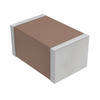 CGA5H2X8R1H224M115AA
CGA5H2X8R1H224M115AA CL10B103KB8NFNC
CL10B103KB8NFNC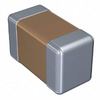 C1608X7S0G475M080AC
C1608X7S0G475M080AC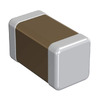 GJM0225C1E2R9CB01L
GJM0225C1E2R9CB01L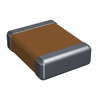 12105C472KAT2A
12105C472KAT2A 08051U300FAT2A
08051U300FAT2A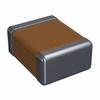 1210YC155MAT2A
1210YC155MAT2A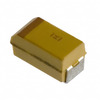 T491A336K006AT
T491A336K006AT T491X107K025AT
T491X107K025AT MAX147BEAP+T
MAX147BEAP+T
- CY7C2270KV18-400BZXC
- RT9018A-25GSP
- AT28C64-20JC
- CM800E3U-24H
- LD1117S33TR
- ADF4106BCPZ-R7
- T491X157K016ZTZV10Z022
- LM340T-5.0
- BCM89501BBQLEG
- LT8609BIMSE#PBF
- T491B476K010AT41537126
- LMH6739MQX
- XCKU5P-2FFVB676I
- LM2676S-3.3
- STM708SDS6F
- AM79C974KC
- AT85SND3B1N-UL
- IDT72V82L20PA
- ISPLSI2128VE-100LT
- RJE0616JSP
- S29JL064H55TFI000
- SC504099VFNR2
- SI3063-FS
- SST85LD1002L-60-PC-LBTE
- DAN403
- AWT5001Q7
- EDK5416CCBH-60-F
- M5M82C55AFP2
- MLPN26367
- sst39vf6401b-70-4c-b1k
- PMB8876V2.1G
- UPS3212C
- 86CM47AUG-6U04
- CP4514B2-DB
- LGE3549XSP
- TIM4450-25UL
- C0603C105K5RACTU
- BFP620H7764
- UQCFVA151JAT2A